BEE COUNTY 428
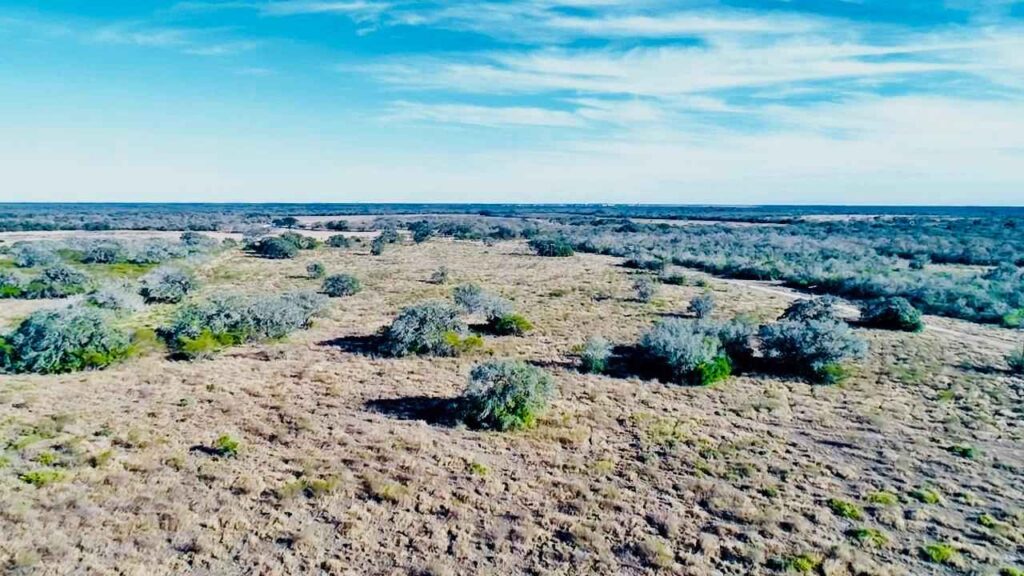
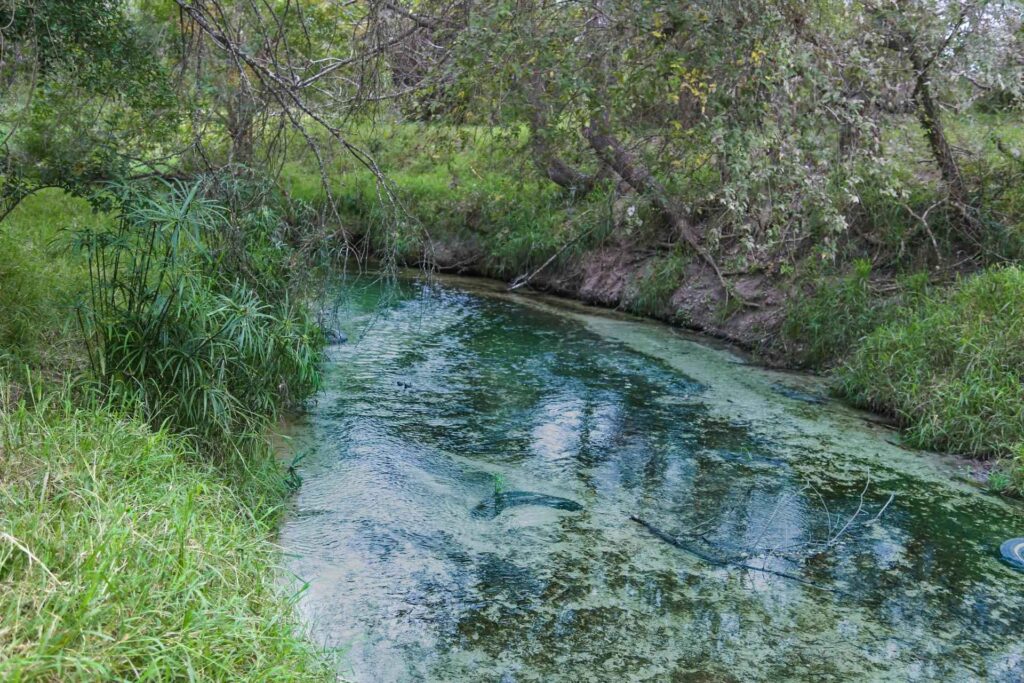
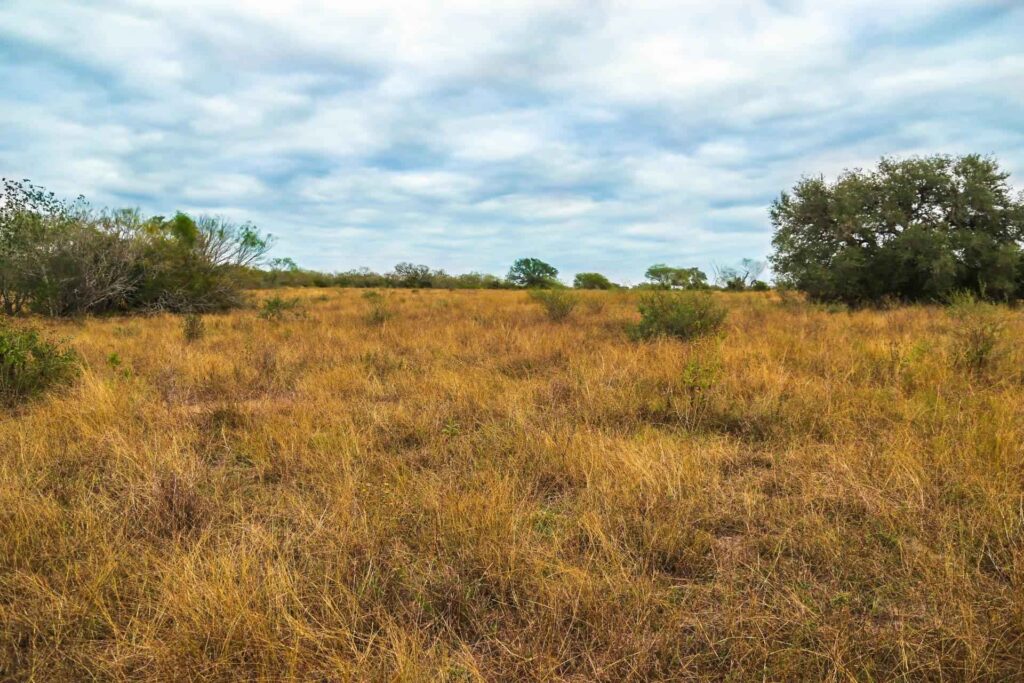
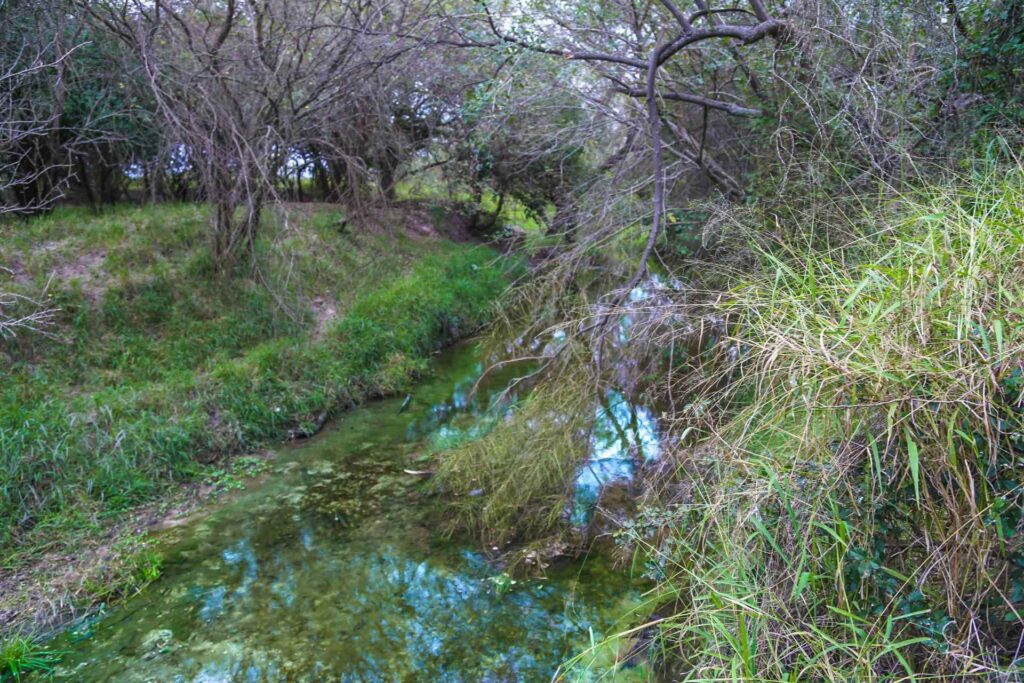
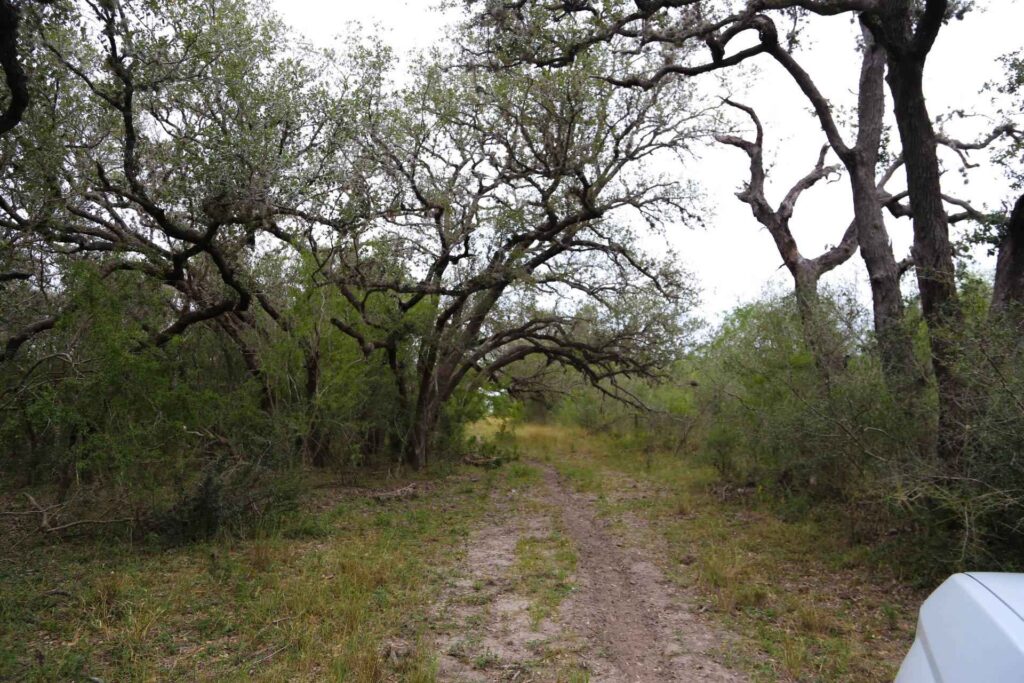
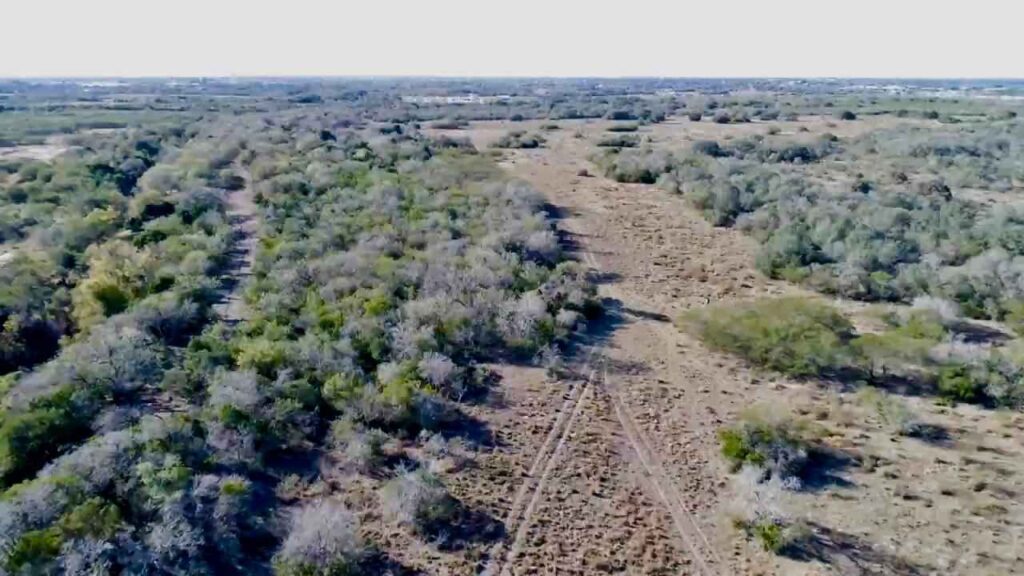
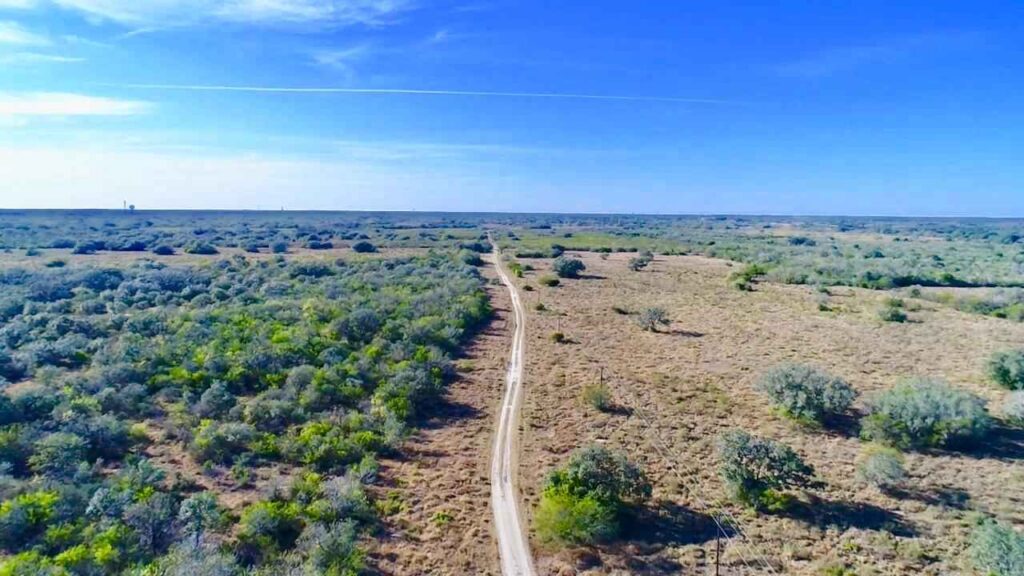
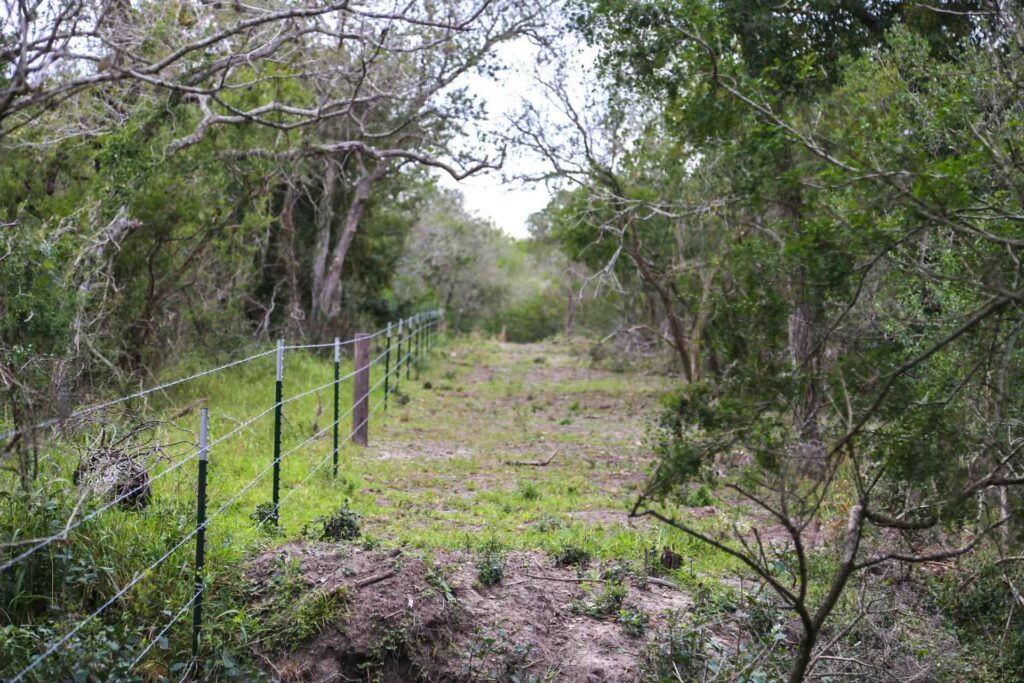
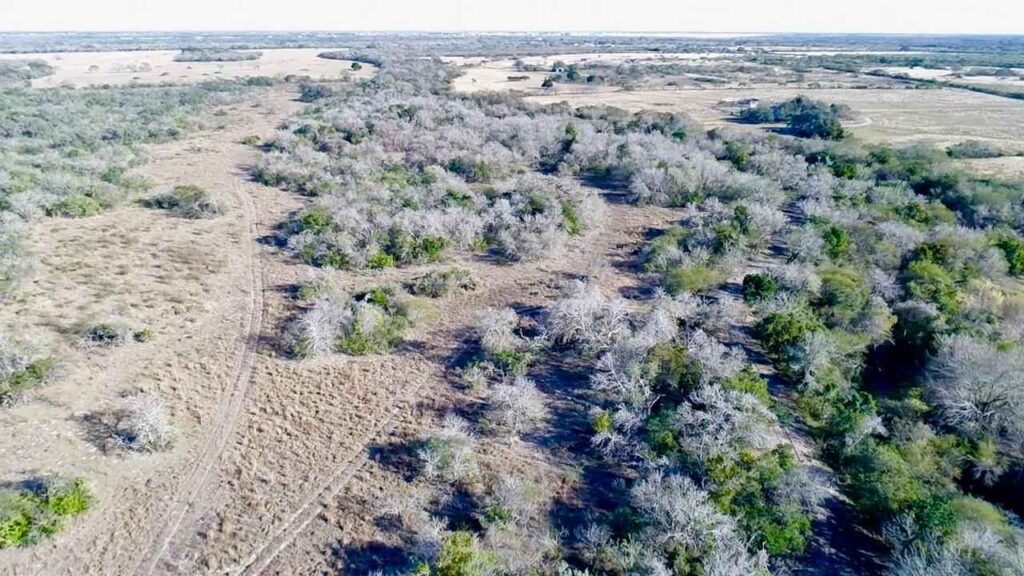
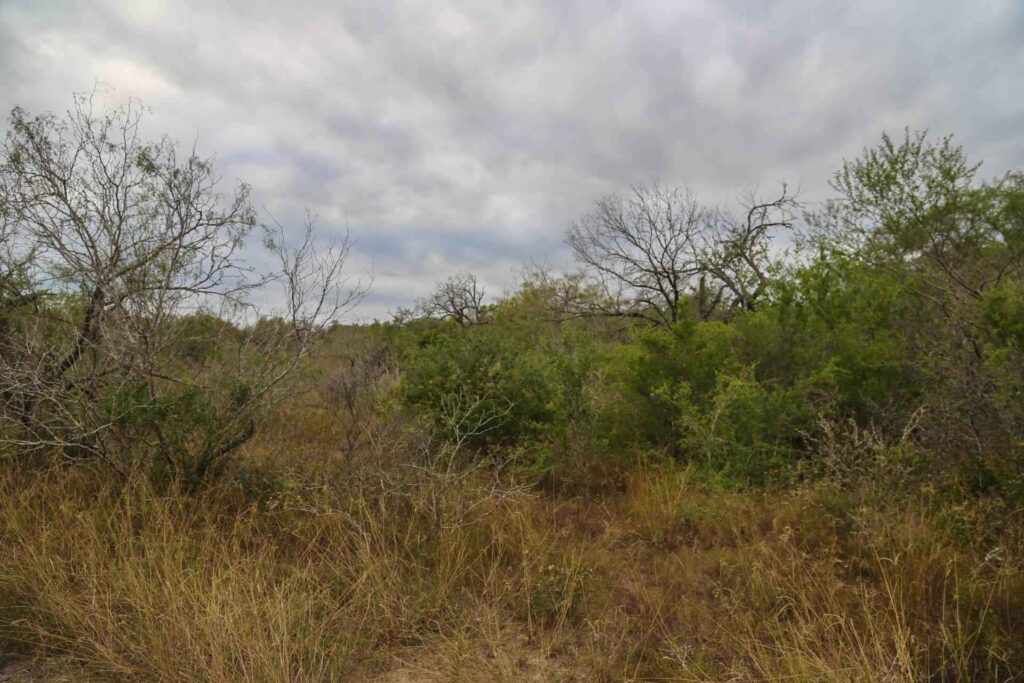
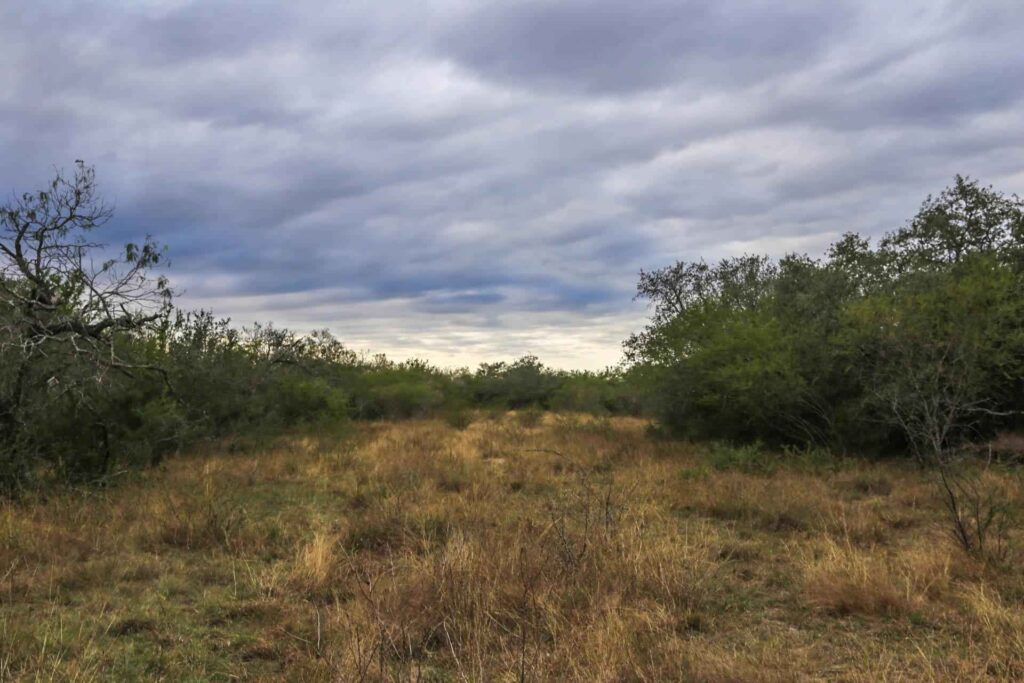
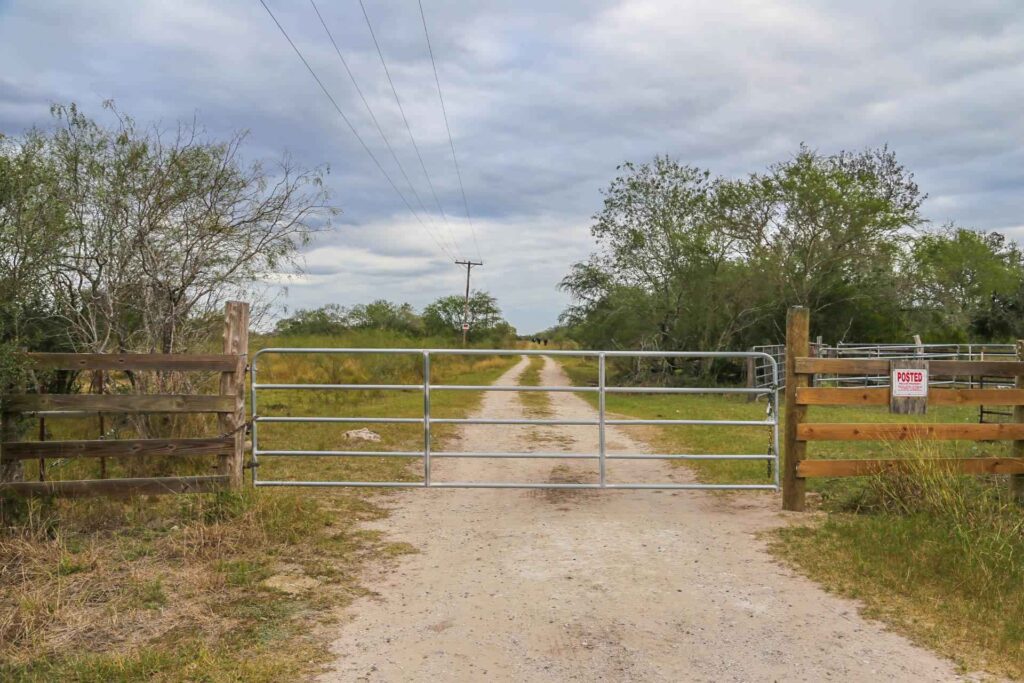
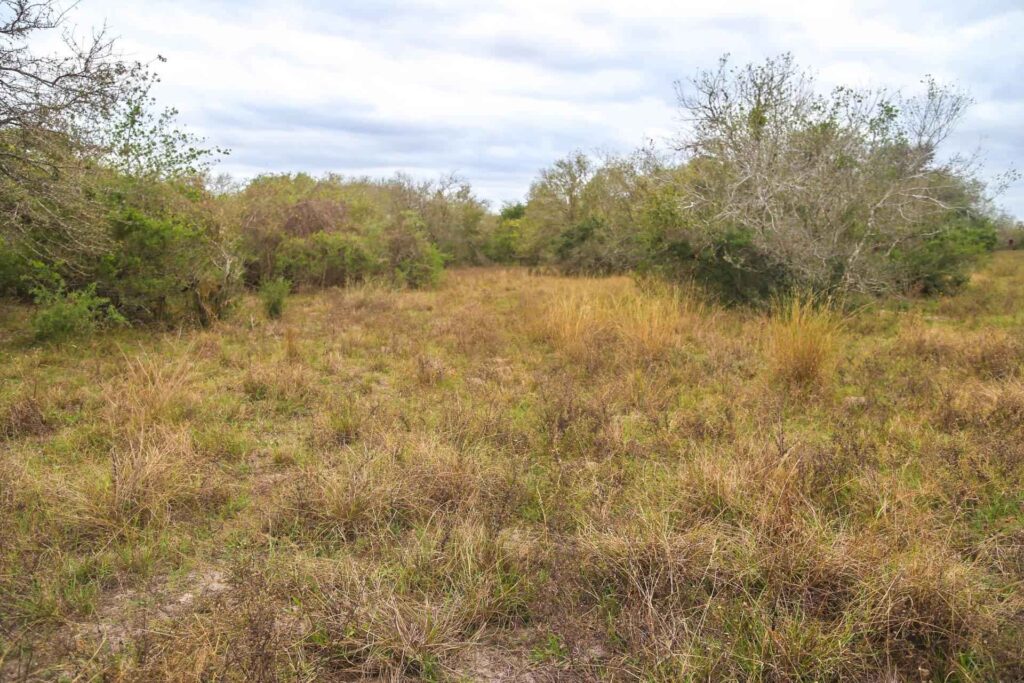
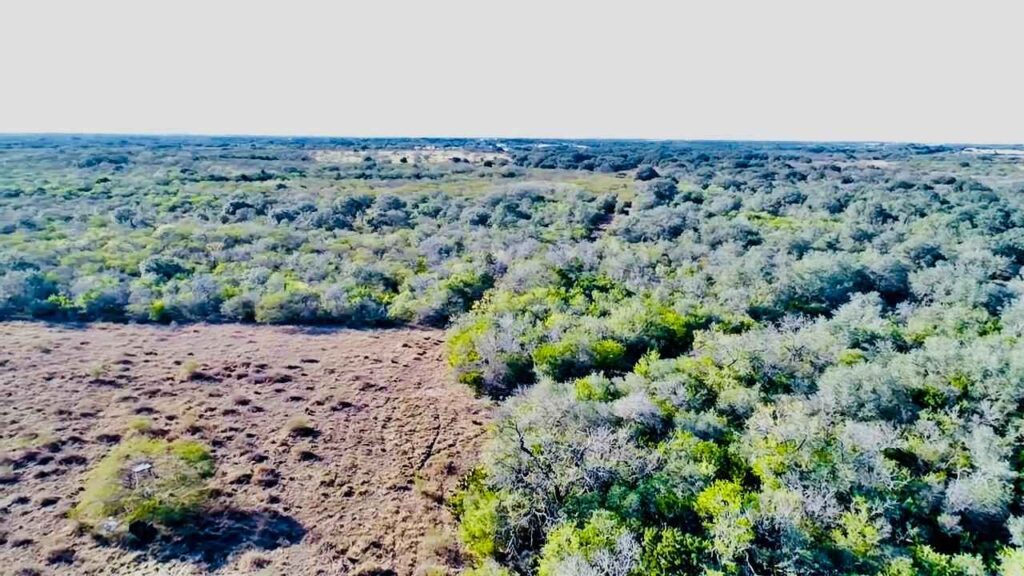
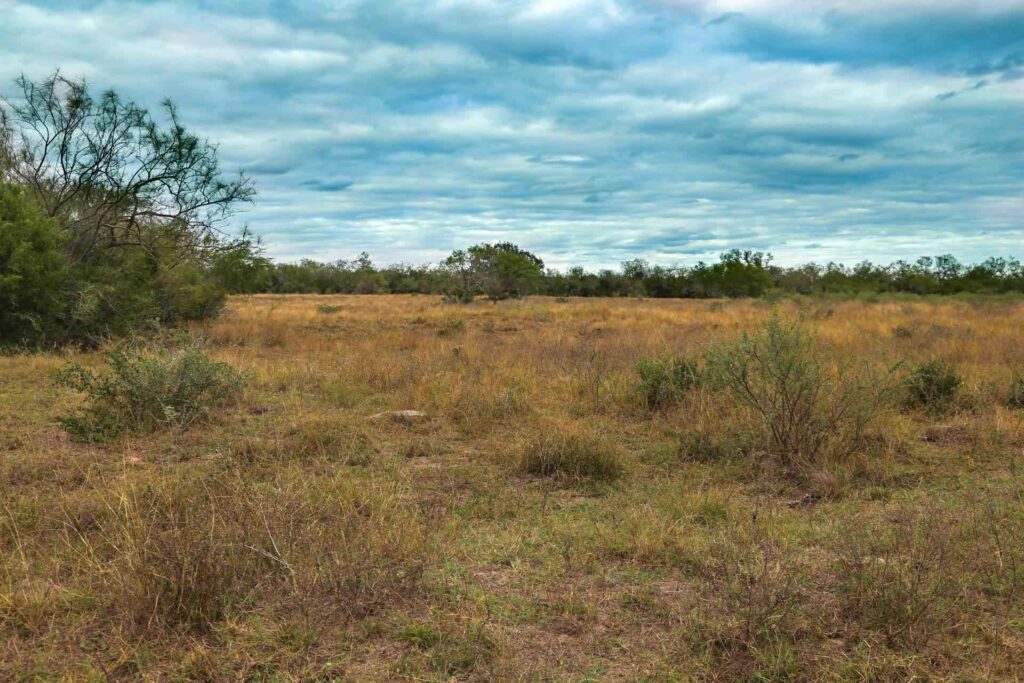
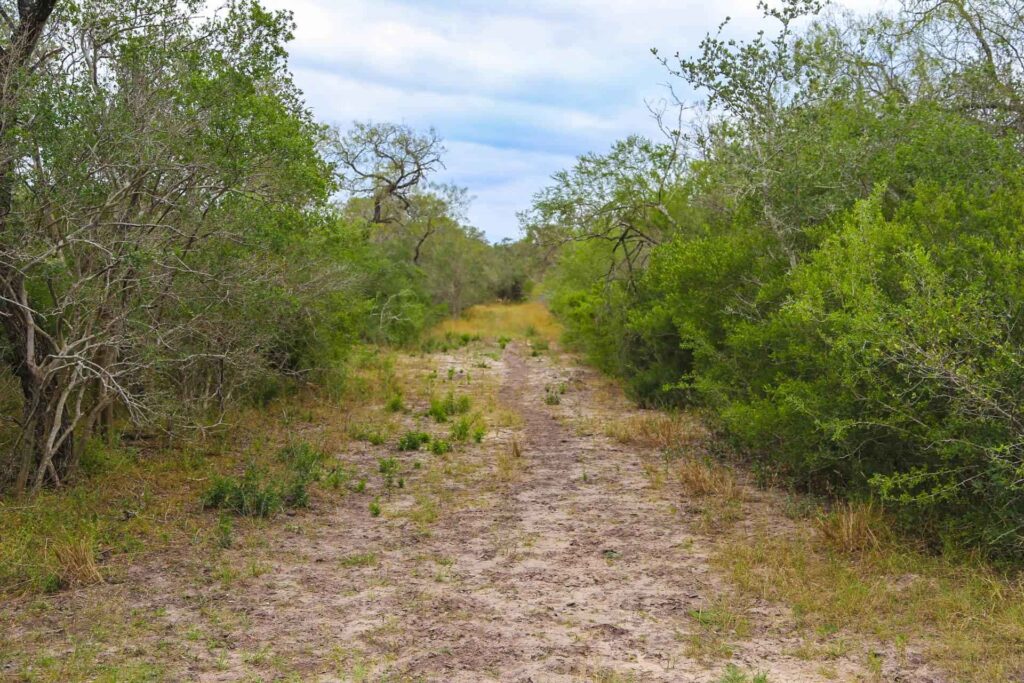
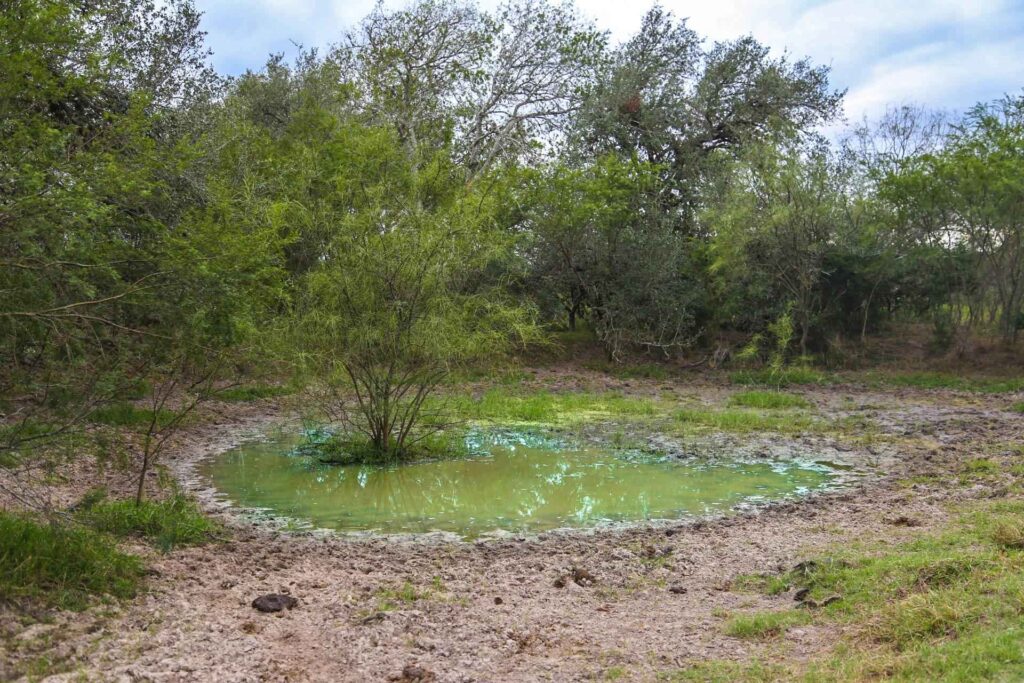
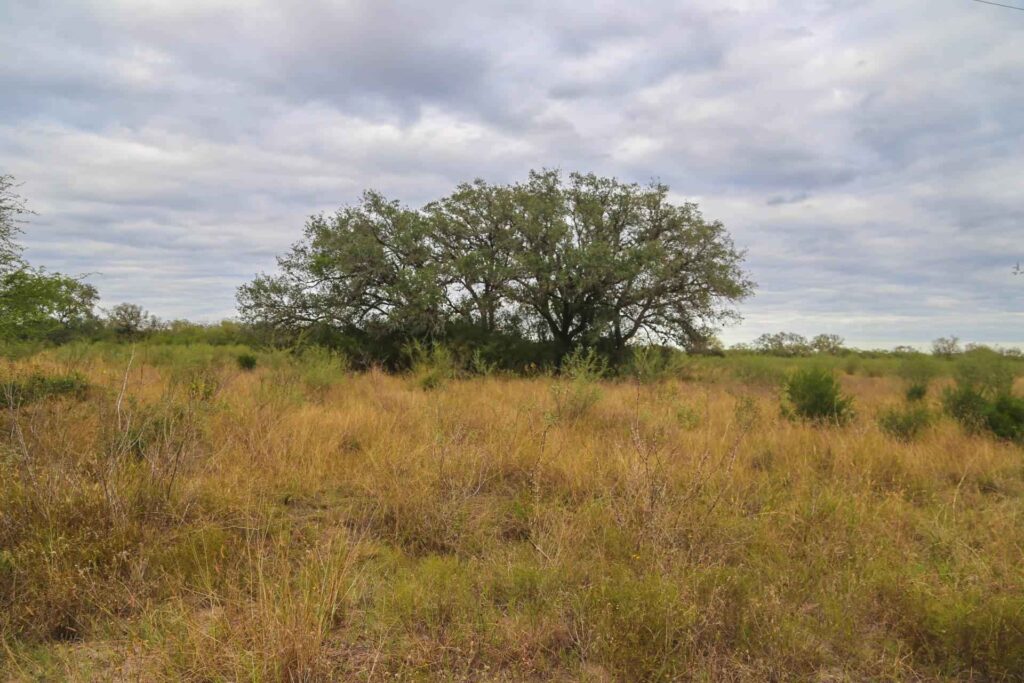
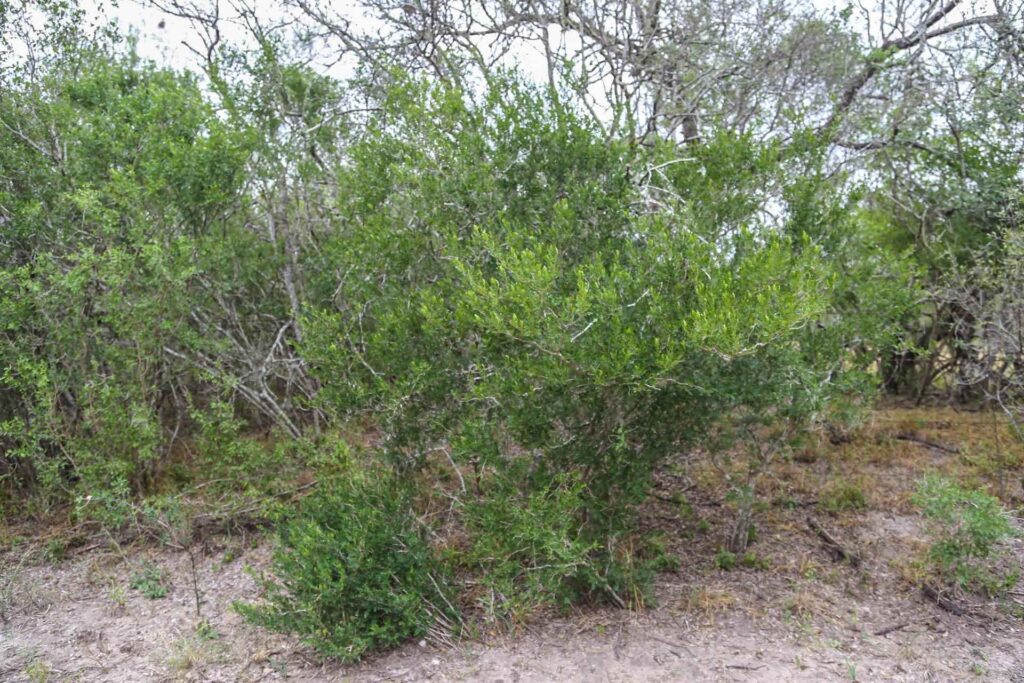
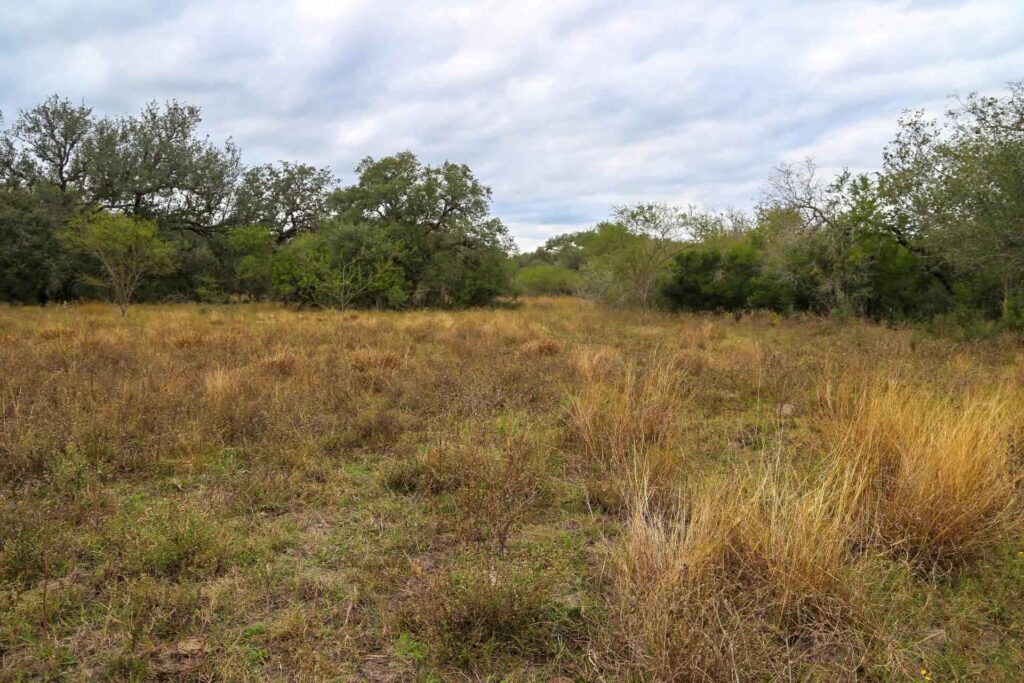
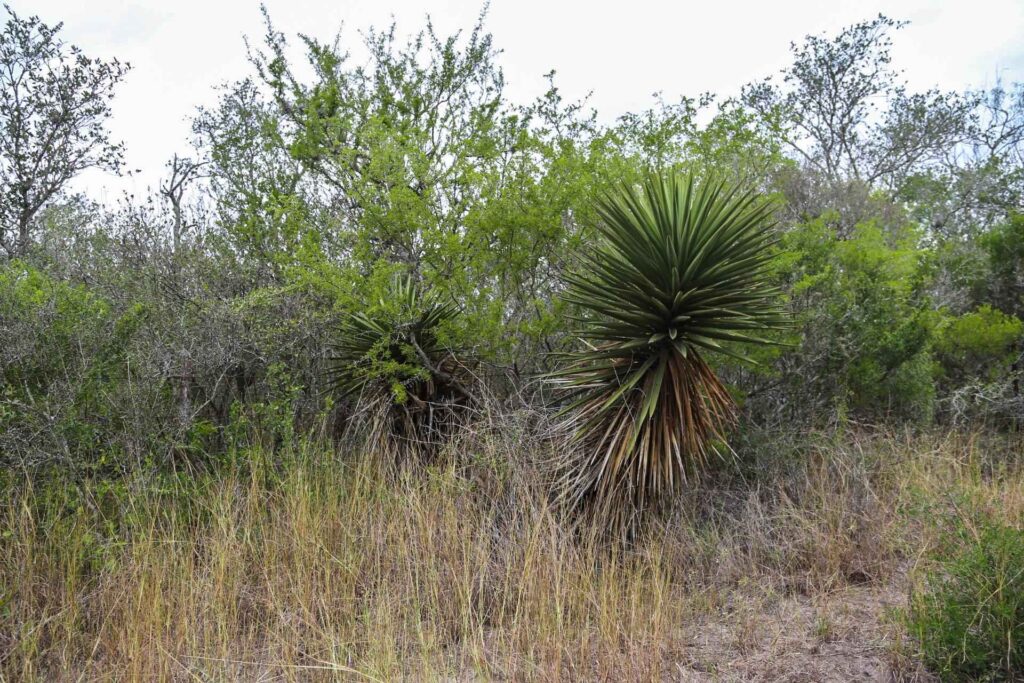
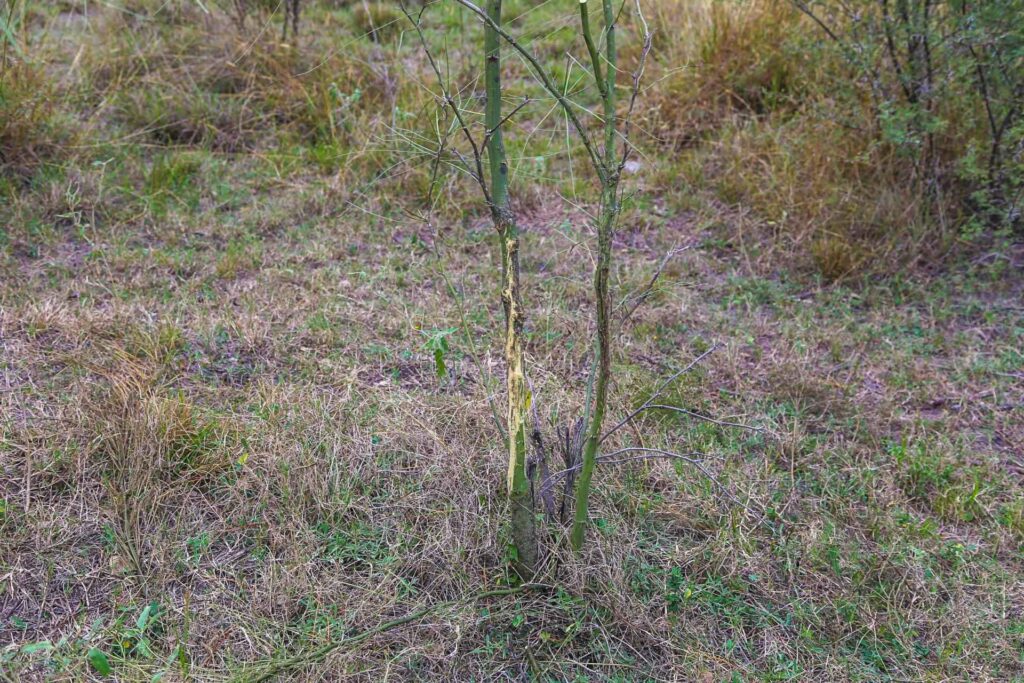
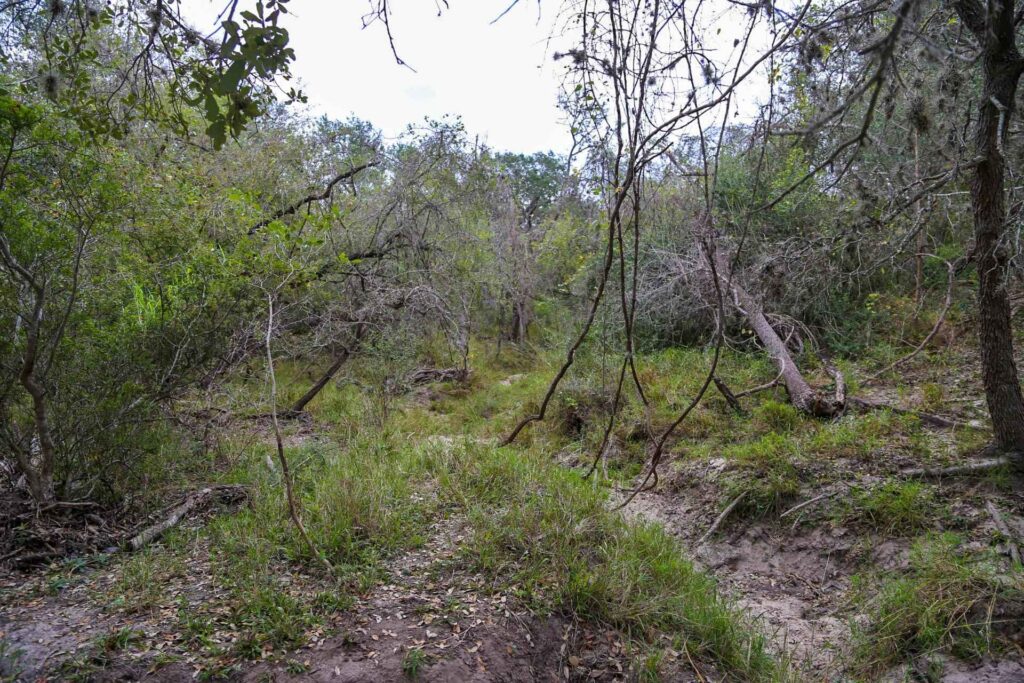
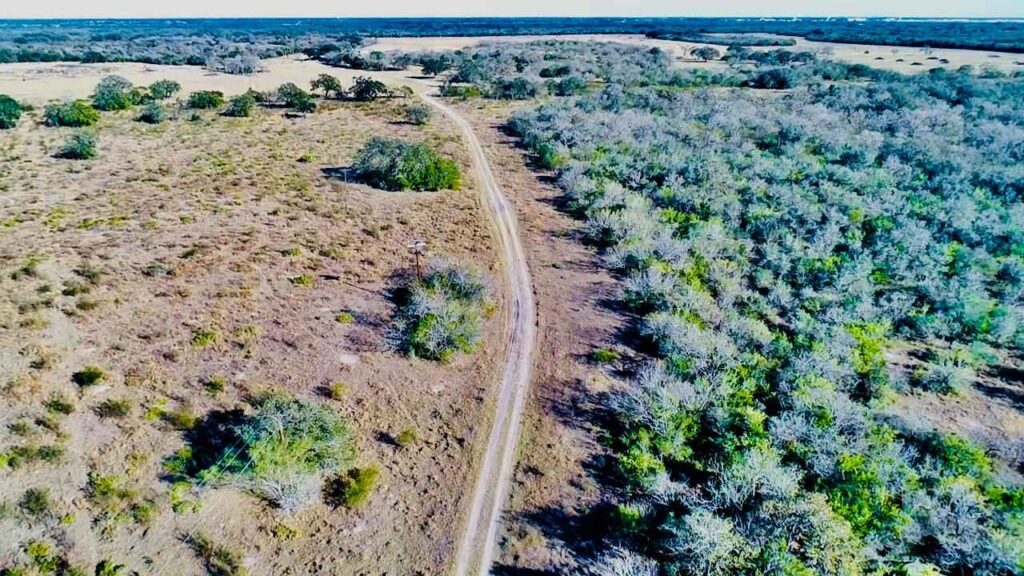
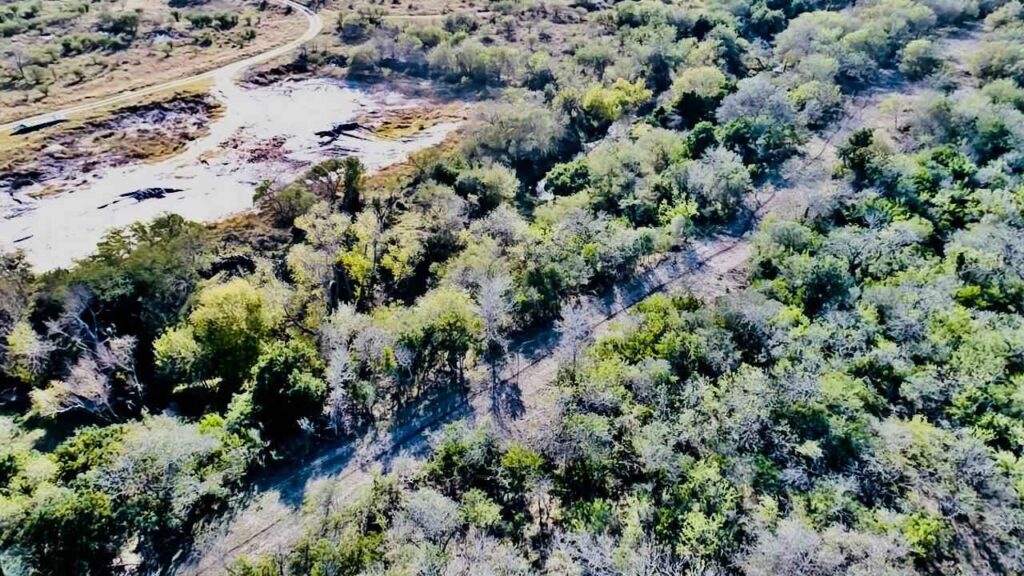
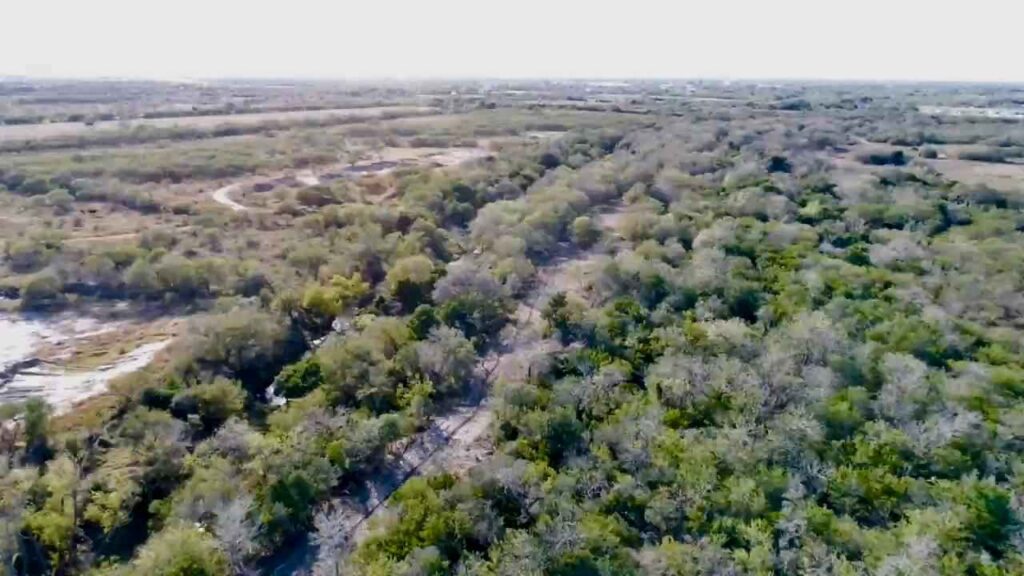
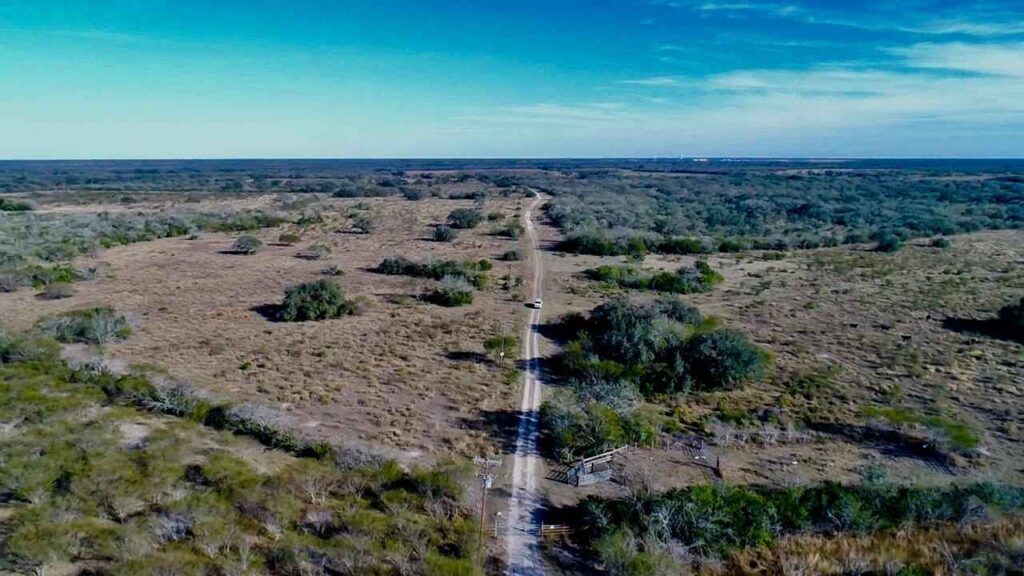
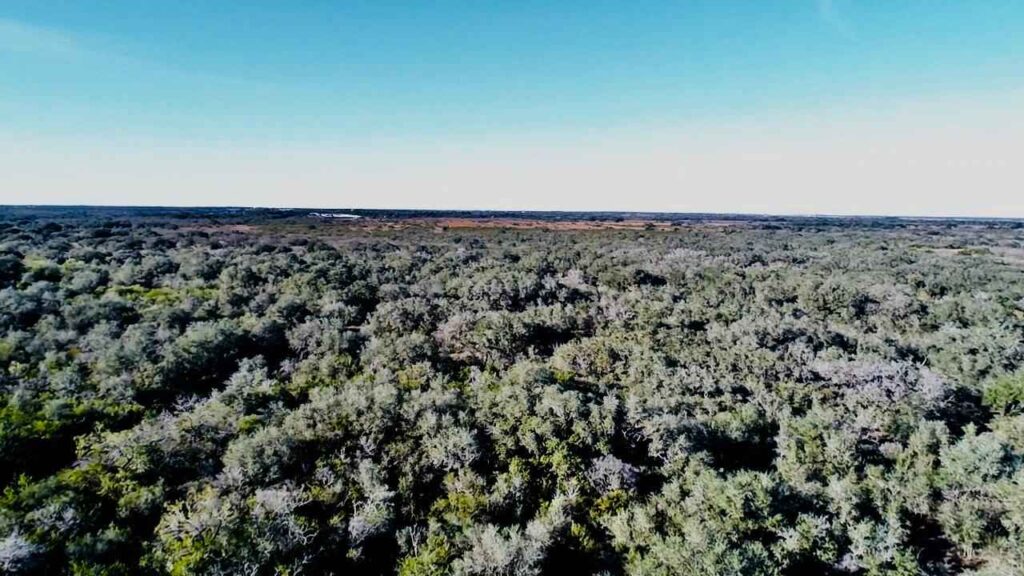




























The listing price for 428 acers is 4950.00 per acre totaling $2,118,600.00 owner will consider dividing into two parcels approximately 222 acres and 206 acres sold as $5,250 per acre.
TREES,BRUSH & GRASSES: Looking at the pictures provided you can see the ranch has something for everyone scattered Live Oak and Mesquite Trees are most common along with native south Texas brush making abundant wildlife forage and cover. The following description will be described in two parcels (Salt Creek) the north 206 acres and (Poesta Creek) the south 222 acres.
The Salt Creek parcel is approximately 206 acres it has a triangular shape with good fencing on three sides. The thick brush makes great wildlife habitat and cover. There is electricity along the entrance road, this area is best suited for housing. This area is also has mixed open grass,bush and trees and is a nice area for dove and quail hunting.There is no cultivation being used on the ranch but you can easily make food plots in the open areas The ranch has good grasses for grazing cattle. Salt Creek is a wet weather creek with thick cover. Salt Creek is approximately 1500 feet long and passes east and west through the property.
The Poesta Creek parcel is approximately 222 acres and is more square shape the landscape is the same as the Salt Creek parcel with one difference Poesta Creek runs along the south boundary and has live water. According to the sellers this creek has always had running water. The creek bank is lined heavily in brush and trees. This parcel also has fencing on three sides with a new fence on the south side.
WILDLIFE: Abundant wildlife does exist including Whitetail deer, Hogs, Bobwhite Quail, Whitewing and Morning Dove and varmints.
WATER: Approximately one mile of the southern boundary is a live water creek named Poesta Creek, this creek flows in Beeville itself. Passing though the north end of the ranch is a dry weather creek named Salt Creek.The stock tanks are small but do hold water.
ELECTRICITY: There are small power lines passing through the ranch along the road easement.
MINERALS; None available
LOCATION & DRIVING DIRECTIONS: Use google maps for the following address- County Road 401 Beeville, TX 78102
Exit Hwy 181 Northbound frontage road on to CR 401. Road dead ends at front gate.
DRIVING FROM US-181 and I-59 drive south on the US-181 frontage road one mile to the first turn around under US-181. Drive under the turn around and drive back north .25 miles and turn right on County Road 401. Drive down CR 401 .25 miles until you are at a metal gate and welcome you made it.
BEEVILLE, TEXAS: Beeville, the county seat of Bee County, is on Poesta Creek at the intersection of U.S. Highways 181 and 59 in central Bee County. The site of the community was settled by the Burke, Carroll, and Heffernan families in the 1830s. Several of the settlers were killed by Indians during the early years of the settlement. When Bee County was organized in 1858, the county seat was founded at a site on the east bank of Medio Creek seven miles east of the current site of the community. This first county seat was known as Beeville-on-the-Medio. This location proved inconvenient, and in 1859 Ann Burke Carroll, Patrick Carroll, and Patrick Burke donated land for a townsite at the current location of Beeville. The first name for the new community was Maryville, after a member of the Heffernan family who had survived the Indian massacre. Eight months later the county commissioners changed the name to Beeville, and for some time the court’s minutes referred to Beeville-on-the-Medio and Beeville-on-the-Poesta. In 1857 G. B. McCollom operated an inn in the new community. George W. McClanahan opened the first store, and a post office was established in 1859. In 1860 the first courthouse was erected and the Beeville Masonic Lodge built a second story for its meetings. The community contributed a company of men to the Confederate Army during the Civil War. In 1878 a second courthouse was built, which burned down in 1911. A third, brick building was erected in 1912 and was subsequently remodeled in 1942 and 194850. The first jail was built in 1874; a second was built in 1893 and renovated in 1979. Beeville’s growth was spurred by the arrival of two railroads in the 1880s. In 1880 the community was still small, with an estimated 300 inhabitants, two general stores, two hotels, a gin and gristmill, and a blacksmith shop. In 1886 the San Antonio and Aransas Pass Railway built through the community, connecting it with Corpus Christi and San Antonio, and in 1889 this railroad was joined by the Gulf, Western Texas and Pacific, building southwest from Victoria. These railways were later acquired by the Southern Pacific, which ceased local operations in the 1970s. By 1890 Beeville had an estimated 1,000 inhabitants. William O. McCurdy launched the first newspaper, the Beeville Bee, in 1886, and the Picayune joined it in 1890. The two papers were combined to form the Bee-Picayune in 1928.
Beeville incorporated for the first time in 1890, but the corporation was dissolved the following year. In 1900 the population had grown to 2,311. The town received electricity and municipal water in 1903 and sewerage in 1910. Beeville was incorporated for the second time in 1908, with a mayor-aldermanic government. Residents opted for a commission government in 1912, then changed to a council-manager government in 1951. The town continued to grow during the early decades of the twentieth century. In 1920 the population reached 3,062, and the following year the streets were paved. The discovery of oil and gas in the county in 1929 led to the building of several large office buildings in Beeville; the Union Producing Company had its district offices there from 1930 until the 1970s. Between 1920 and 1930 the population increased by more than 60 percent, reaching 4,806. In spite of the boost given the local economy by the oil industry, Beeville was hard hit by the Great Depression in the 1930s. A WPA office was opened in the community, and government-funded projects improved city streets. The population grew to 6,789 in 1940, the year the Beeville Chamber of Commerce was chartered. During World War II Beeville benefited from the construction of the Naval Auxiliary Air Station at Chase Field, which eventually became the Naval Air Station, Beeville. The base trained naval aviators from 1943 through 1946, then was temporarily deactivated. In response to the demands of the Korean War the field was reopened in 1952 and continued to train pilots until its closing in 1992. The site was subsequently redeveloped into the Chase Field Industrial Complex, which in 2016 was home to regional administrative offices for the Texas Department of Criminal Justice and two prison transfer facilities. Another state prison unit was located just beyond the city limits. Beeville continued to grow, reaching 9,348 inhabitants in 1950 and 13,811 in 1960. Thereafter, the population remained relatively constant13,506 in 1970, 14,574 in 1980, 13,547 in 1990, 13,129 in 2000, and 12,863 in 2010. The first school in Beeville was held in a private home in 1860, and the first school building was built in 1877. The Beeville Independent School District had ten schools in the mid-1980s. In 2016 there were six schools serving approximately 3,500 students. The first parochial school was Saint Mary’s Academy, built in 1896 and destroyed by fire in 1930. St. Joseph’s School was built on the same location, and seven other parochial or private schools existed in 1984. Bee County College opened in 1967. In 1998 it was renamed Coastal Bend College, and in 2016 it operated branch campuses in Alice, Kingsville, and Pleasanton. The earliest church services were held in the homes of the Irish Catholic settlers of the area in the 1840s. The first Methodist church was organized in 1861, and the first Baptist church in 1869. The community had thirty-two churches in the mid-1980s. In 2010 the town’s economy was focused on county government, oilfield services, state correctional services, and agribusiness. An oil and gas boom on the Eagle Ford Shale began in the 2010s. Western Week was held every October in the city coliseum. Beeville had a senior citizen’s center, an art museum, and a hospital. In 2006 Beeville was designated a Texas Main Street City by the Texas Historical Commission
BEE COUNTY HISTORY: Bee County is in the Rio Grande plains of south central Texas, fifty miles northwest of Corpus Christi and 146 miles southeast of Austin. It is bordered on the north by Karnes and Goliad counties, on the east by Refugio County, on the south by San Patricio County, and on the west by Live Oak County. Beeville is the county’s largest town and seat of government. The center point of the county is 2825′ north latitude and 9745′ west longitude. Several important thoroughfares cross the county, including U.S. highways 59 and 181 and State highways 202 and 359. The county’s transportation needs are also served by the Southern Pacific Railroad. An airport built in 1966 serves Beeville and the surrounding region.
Bee County covers 866 square miles that slope gently to the coast. The elevation ranges from 200 to 300 feet. Geologically northern Bee County is in the Rio Grande embayment; the Lissie and Beaumont formations extend into the southern part of the county to form a broad, flat, and fertile plain. Blanco, Medio, and Aransas creeks and their tributaries, which flow in a southeasterly direction, drain the county. The southwest corner of the county has cracking clayey soils or loamy surfaces with cracking clayey subsoils. The northern two-thirds of the county has dark, alkaline soils, with loamy surface layers and cracking clayey subsoils, while the remainder of the county has light-colored acidic soils, with loamy surface layers and cracking clayey subsoils. Between 41 percent and 50 percent of the land in the county is considered prime farmland.
Question’s please call 713-444-4114
BUYER’S BROKER TERMS:
Buyers brokers must be identified on first contact, and must accompany buying prospect on first showing to be allowed fee participation. If this condition is not met, fee participation will be at the sole discretion of the management of the Company.
If a Buyer Prospect makes an initial contact with our Company and then later brings in other Broker, after the fact, the other Broker shall not be entitled to fee participation and the Buyer shall be responsible for paying the other Brokers fee, if any.
DISCLAIMER:
The Information provided herein is deemed accurate, but subject to errors, omissions, price changes, prior sale or withdrawal. Ranchland Real Estate and Broker Agents licensed by Ranchland Real Estate does not guarantee or is anyway responsible for the accuracy or completeness of information, and provides said information without warranties of any kind. Please verify all facts.
Winn Ranch is now offered as a single parcel with entitlements for a mixed use development. 514 acres of the finest Lake Travis waterfront property to come onto the market in… 250 beautiful acres with Chandler Road frontage in Taylor and located in an economic opportunity zone. Property includes 2 homes (not in the best condition). There is a row cr… 92.7 acres for sale directly off Toll 130 and Chris Kelley Blvd in Hutto with tons of frontage. The MUD has efficiently operated its own sewer treatment plant since 2010. MUD …000 Sylvester Ford RD, Lago Vista, TX 78645
Lago Vista, TX 78645
Learn More »703 County Road 368 , Taylor, TX 76574
Taylor, TX 76574
Learn More »1500 Chris Kelley BLVD, Hutto, TX 78634
Hutto, TX 78634
Learn More »
Keep up with our latest properties and news on Texas land market trends!
100 US-290 W, Dripping Springs, TX 78620
Dripping Springs Office
512-829-5522
Houston Office
713-444-4114
info@ranchlandrealestate.com
TREC Information About Brokerage Services – TREC Consumer Protection Notice
Copyright © 2023 Ranchland Real Estate. All Rights Reserved.